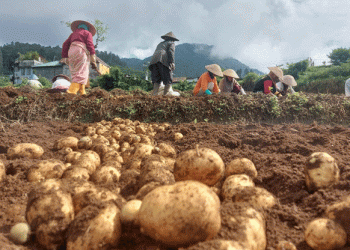The North Carolina sweet potato industry is encountering a decrease in overall supply compared to previous years, signaling potential price hikes for consumers. Thomas Joyner, president of Nash Produce, attributes this decline to a smaller crop harvested in 2023 compared to 2022, which was swiftly distributed, resulting in depleted inventory levels.
Joyner explains that the decision to reduce the crop size was imperative for the sweet potato sector, as profitability dwindled in preceding years. The acreage dedicated to sweet potato cultivation dropped from approximately 100,000 acres in 2021 to 70,000 acres by 2023 across the industry, reflecting financial challenges faced by growers.
Sweet potatoes pose unique challenges for farmers due to manual harvesting and transplanting processes, which significantly increase production costs. Moreover, the longevity of the product amplifies financial burdens, as the harvest from the previous year continues to be shipped until September or early October, incurring interest costs.
Despite supply constraints, consumer demand for sweet potatoes remains robust, with a steady growth rate of 2-3% annually. Joyner anticipates heightened demand during Easter, traditionally a peak period for sweet potato consumption. However, inventory levels for the remainder of the summer hinge on export volumes to Europe, which could influence pricing dynamics.
The export window for sweet potatoes has narrowed, shifting from late December to August to February to July, primarily due to competition from Egyptian exports. Consequently, domestic retail prices have strengthened, offering relief to growers and potentially averting further acreage reductions in 2024.
Joyner warns of potential price escalations in the fall, as operational costs continue to surge. Thus, consumers can expect higher prices in the coming months, reflecting the economic realities of sweet potato production.
In summary, while North Carolina sweet potato supplies dwindle, the industry braces for increased prices amid sustained consumer demand and evolving export dynamics.







